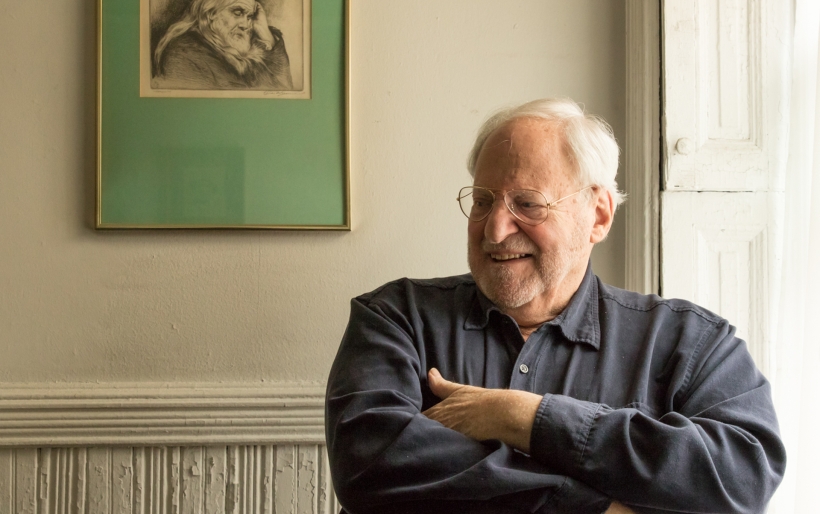Henry Grossman first forayed into photography during his time at Brandeis, where he amassed a collection of portraits of guest speakers hosted by the university. As a photographer, he would go on to enjoy a long career shooting assignments for Life, Time, Newsweek, and The New York Times, and to compose portraits of a long list of celebrities and every president since Eisenhower (“except Trump, I have no interest in photographing him,” he sneered, while relating this part).
Besides all that, he was also a student of theater arts. After college, he studied at The Actors Studio, and ultimately appeared in film and on Broadway. And he sang. In the ‘60s, he toured with the national company of the Metropolitan Opera, and made his New York City debut in 1973, at Carnegie Hall. A tenor, Grossman went on to perform with several other organizations, including the Philadelphia Orchestra, in the 1980s, under conductor Riccardo Muti. “I’m an opera buff,” he declared, when we spoke at his home, as our conversation turned toward his work with The Beatles. “Even in college, I loved opera. So The Beatles were music I couldn’t hear. Now I can! But I was not really interested in that music [at that time].”
Having first been commissioned to cover their 1964 debut on The Ed Sullivan Show, Grossman was then asked to photograph the making of their second feature film, Help!, and to travel along with the film’s cast and crew, and director Richard Lester to document their production on location in Austria and the Bahamas. “What happened when we were in Austria,” the photographer remembered fondly, “I became more friendly with George [Harrison] for some reason, and George asked me, ‘Henry, when we go back to England, can you do some more portraits of Patti [Boyd] and me?’ And I went over there, and he said, ‘Hey, let’s go visit John!’ He was five or ten minutes away, and we went over…”

:quality(70)/cloudfront-eu-central-1.images.arcpublishing.com/irishtimes/UEWG6A53WVY7NWYCYLR57LWJ5E.jpg)



